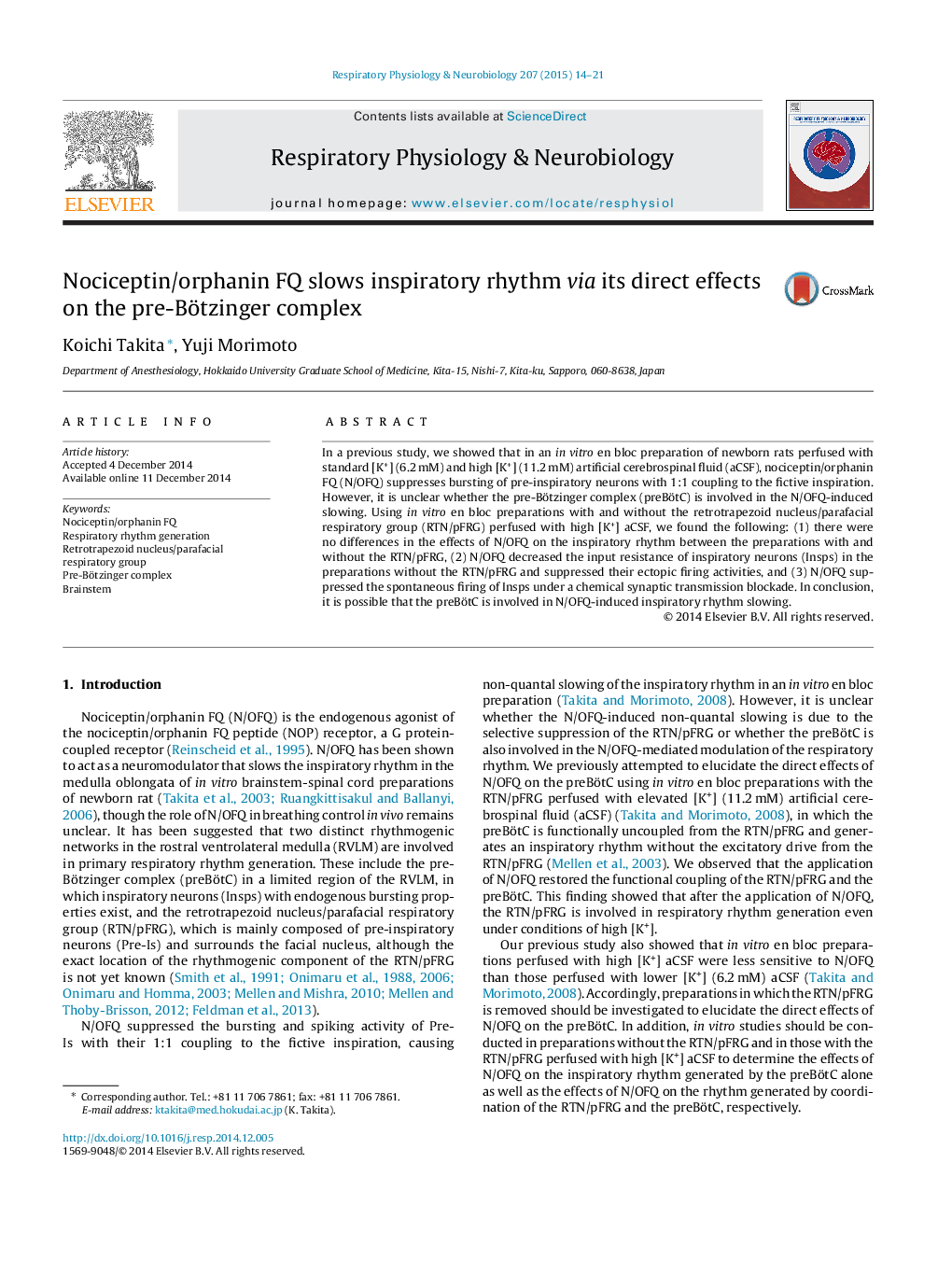| کد مقاله | کد نشریه | سال انتشار | مقاله انگلیسی | نسخه تمام متن |
|---|---|---|---|---|
| 2846879 | 1571321 | 2015 | 8 صفحه PDF | دانلود رایگان |

• We examined the involvement of the pre-Bötzinger complex in the N/OFQ-induced slowing.
• In vitro newborn rat en bloc preparations with and without the RTN/pFRG were used.
• N/OFQ slowed the inspiratory rhythm generated by the pre-Bötzinger complex alone.
• There were no differences in the effects of N/OFQ between the preparation types.
• N/OFQ suppressed the intrinsic burst ability of the inspiratory neurons.
In a previous study, we showed that in an in vitro en bloc preparation of newborn rats perfused with standard [K+] (6.2 mM) and high [K+] (11.2 mM) artificial cerebrospinal fluid (aCSF), nociceptin/orphanin FQ (N/OFQ) suppresses bursting of pre-inspiratory neurons with 1:1 coupling to the fictive inspiration. However, it is unclear whether the pre-Bötzinger complex (preBötC) is involved in the N/OFQ-induced slowing. Using in vitro en bloc preparations with and without the retrotrapezoid nucleus/parafacial respiratory group (RTN/pFRG) perfused with high [K+] aCSF, we found the following: (1) there were no differences in the effects of N/OFQ on the inspiratory rhythm between the preparations with and without the RTN/pFRG, (2) N/OFQ decreased the input resistance of inspiratory neurons (Insps) in the preparations without the RTN/pFRG and suppressed their ectopic firing activities, and (3) N/OFQ suppressed the spontaneous firing of Insps under a chemical synaptic transmission blockade. In conclusion, it is possible that the preBötC is involved in N/OFQ-induced inspiratory rhythm slowing.
Journal: Respiratory Physiology & Neurobiology - Volume 207, 1 February 2015, Pages 14–21